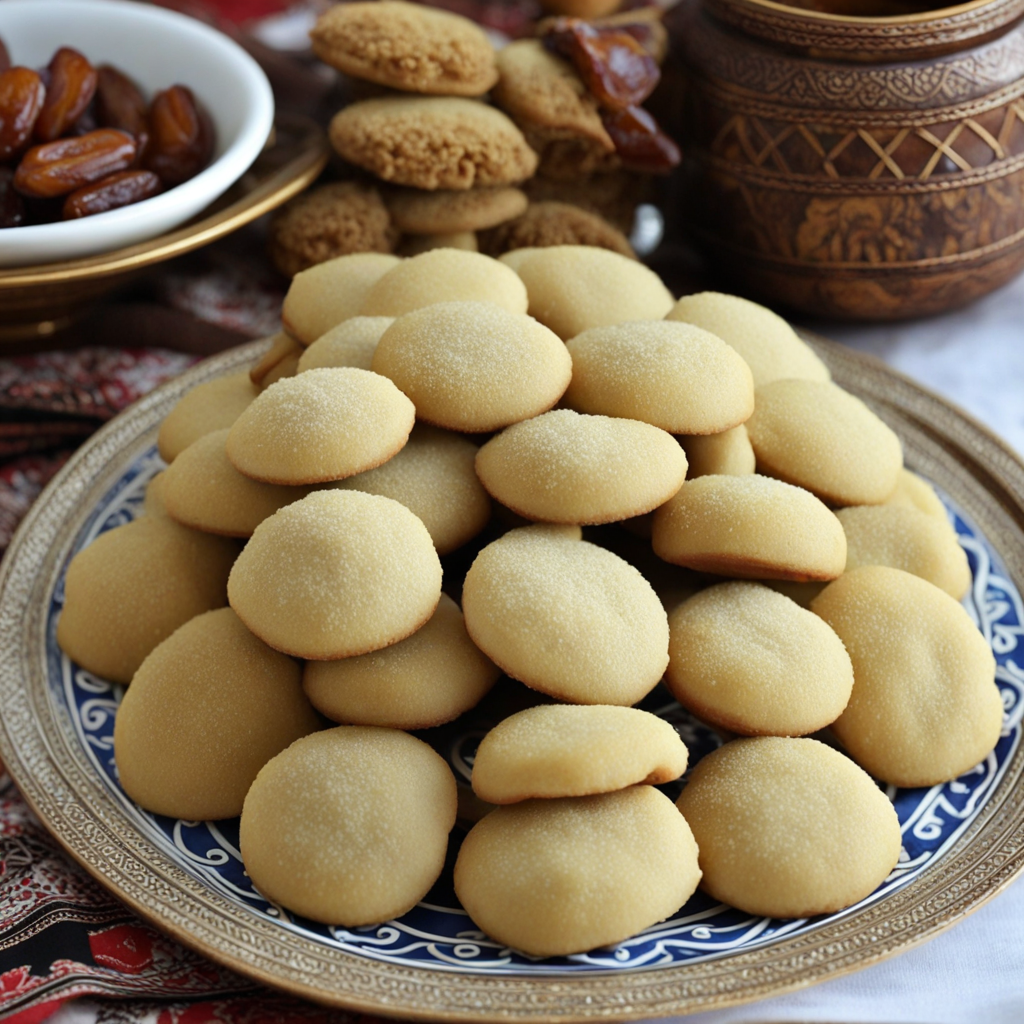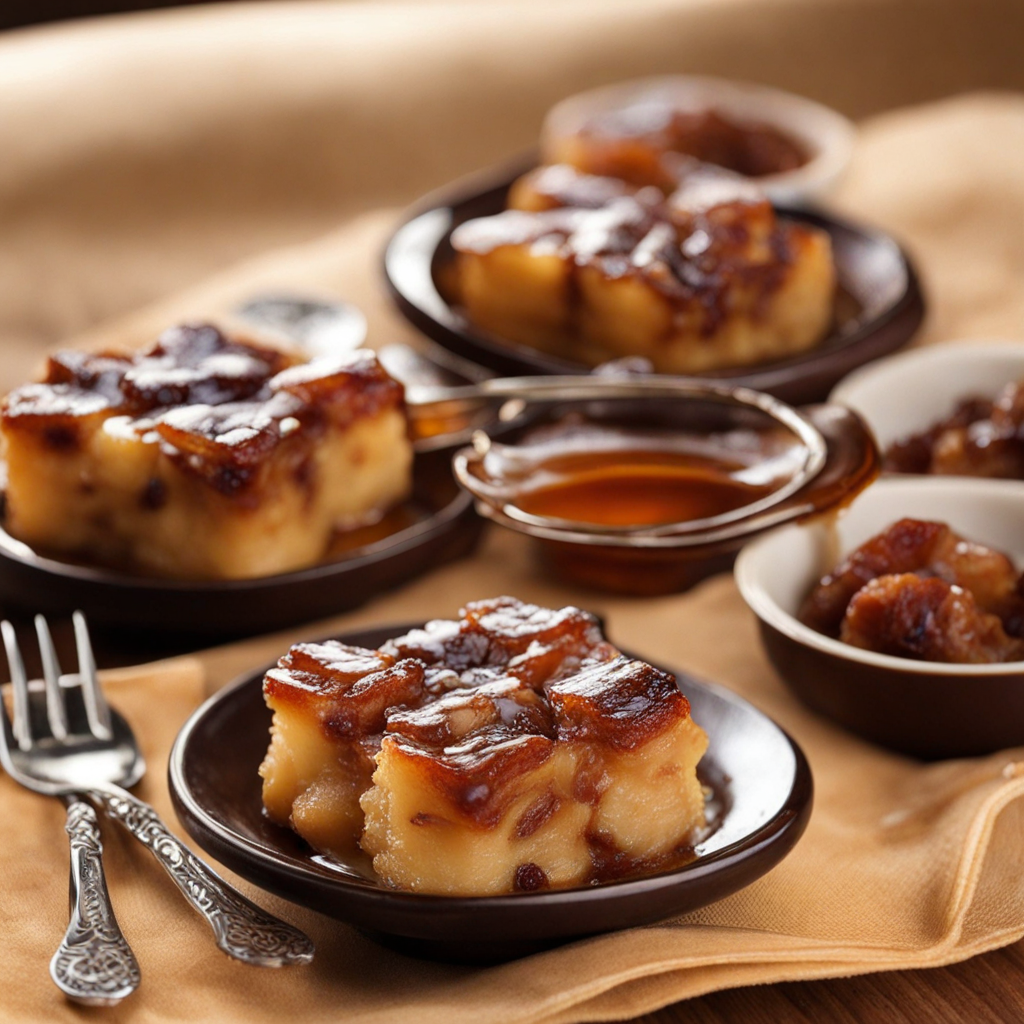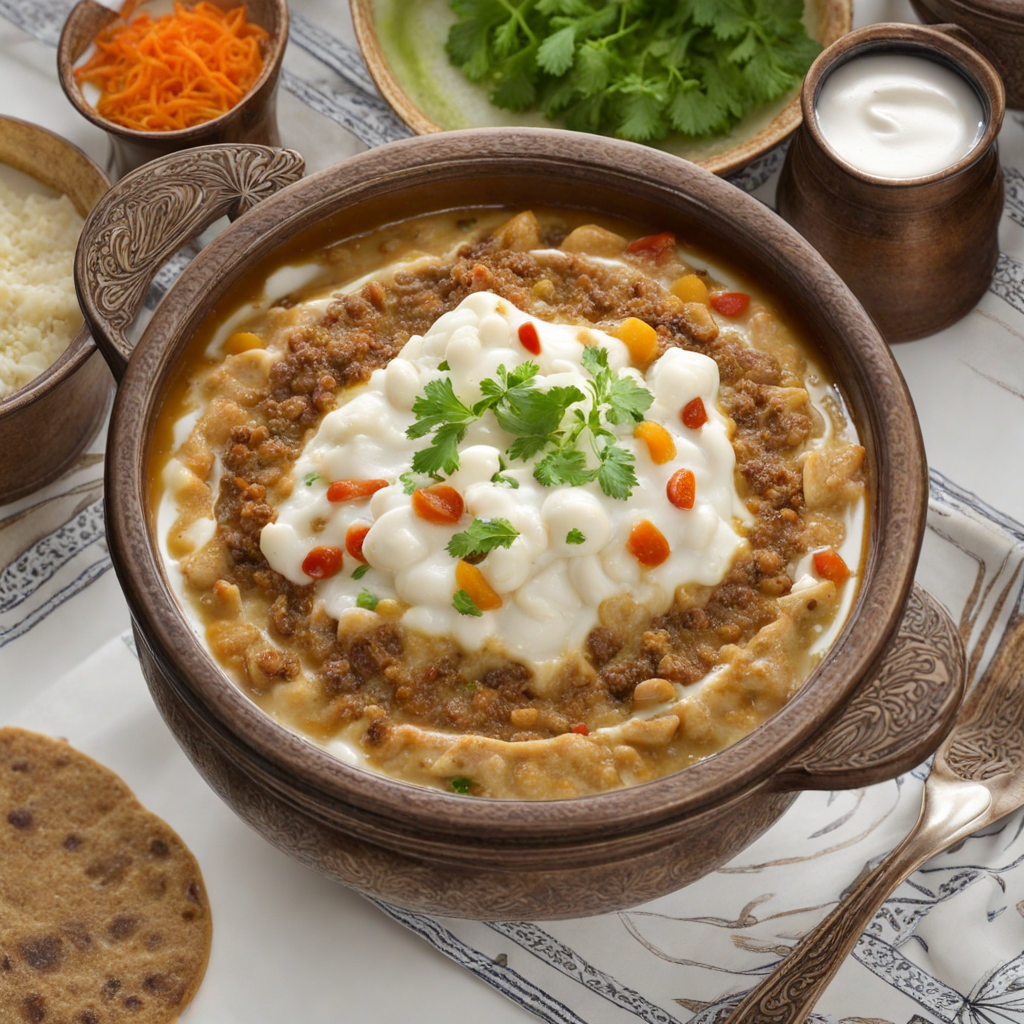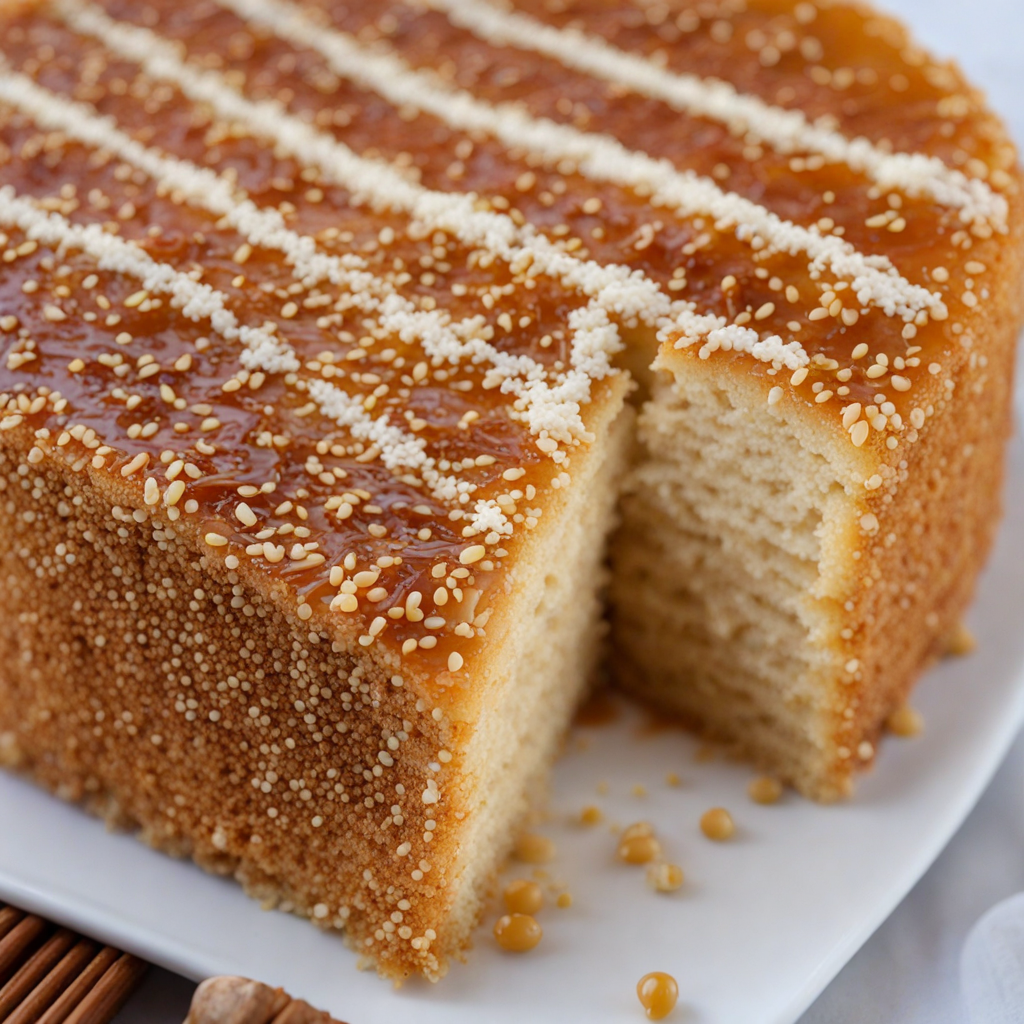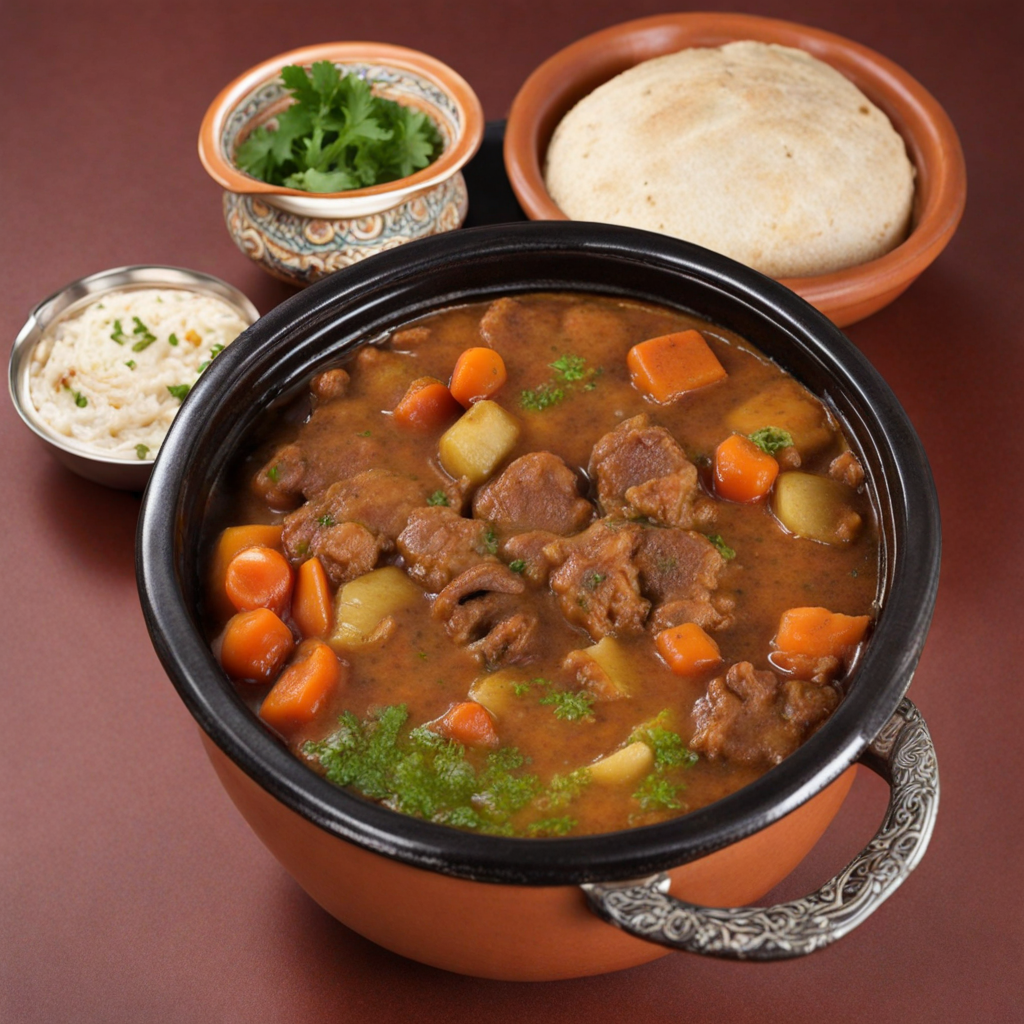Ka'ak
Ka'ak is a traditional Yemeni bread that embodies the rich culinary heritage of the region. This delightful treat is often shaped into rings or flat rounds and is characterized by its crunchy exterior and soft, airy interior. The dough is made from simple ingredients such as flour, yeast, water, and salt, but what sets Ka'ak apart is its unique blend of spices that often includes cardamom, anise, and sometimes sesame seeds. These aromatic spices infuse the bread with a warm, inviting flavor that transports you to the bustling streets of Yemen with each bite. Traditionally, Ka'ak is baked in a clay oven, which gives it a distinct smoky flavor and a beautiful golden-brown crust. It can be enjoyed on its own, but many Yemenis pair it with a cup of sweet tea or coffee, making it a perfect snack or breakfast item. The texture is both crunchy and chewy, providing a satisfying experience that tempts you to reach for another piece. You might also find variations filled with nuts or sweetened with honey, adding a delightful twist to this classic bread. Beyond its taste, Ka'ak is often enjoyed during special occasions and gatherings, symbolizing hospitality and sharing in Yemeni culture. Whether you are savoring it fresh from the oven or enjoying it later with dips and spreads, each piece of Ka'ak tells a story of tradition and community. If you’re looking to explore a taste that captures the essence of Yemen, Ka'ak is a must-try that promises to awaken your palate and leave you craving more.
How It Became This Dish
The History of كعك (Ka’ak) from Yemen #### Origins Ka’ak, a beloved traditional pastry, has deep roots in the Arabian Peninsula, particularly in Yemen, where it holds a significant place in the cultural and culinary landscape. The word "Ka’ak" itself is derived from the Arabic word for "cake" and is a term used to describe various types of baked goods, but in Yemen, it specifically refers to a spiced bread or biscuit that is often enjoyed with coffee or tea. The origins of Ka’ak can be traced back to ancient civilizations in the Middle East. The practice of baking with flour and water has been a staple of human diets since the dawn of agriculture. Archaeological findings suggest that the art of bread-making began around 10,000 years ago in the Fertile Crescent, where the first domestication of grains took place. As trade routes developed, particularly during the rise of the spice trade, the introduction of ingredients such as cardamom, anise, and sesame seeds began to influence regional baking traditions, laying the groundwork for the distinctive flavor profiles found in Yemeni Ka’ak today. #### Cultural Significance In Yemen, Ka’ak is more than just a food item; it embodies hospitality and community. Traditionally, it is served during special occasions, celebrations, and gatherings, reinforcing social ties among families and friends. The preparation of Ka’ak often involves the participation of multiple family members, transforming the baking process into a communal activity that fosters bonding. Ka’ak is often associated with festivals, weddings, and religious celebrations. During Ramadan, it is common to break the fast with a cup of coffee and a piece of Ka’ak, symbolizing the joy of sharing and togetherness. The pastry is also a popular choice for gifting, especially during Eid al-Fitr, where beautifully packaged Ka’ak is exchanged among friends and relatives as a gesture of goodwill. The significance of Ka’ak extends beyond its taste; it serves as a cultural marker that reflects the identity of the Yemeni people. The unique spices and flavors of Ka’ak tell the story of Yemen’s rich cultural heritage, influenced by centuries of trade, migration, and interaction with diverse cultures. #### Development Over Time The evolution of Ka’ak over the years has been influenced by various factors, including geography, available resources, and cultural exchanges. In the past, the preparation of Ka’ak was often a labor-intensive process, requiring manual grinding of grains and meticulous measuring of spices. The traditional recipe typically includes flour, sugar, yeast, and an array of spices such as cardamom, cinnamon, and sometimes even a hint of saffron. As Yemen entered the modern era, the availability of commercial flour and baking ingredients transformed the way Ka’ak was made. While traditional methods are still cherished and practiced in many households, modern conveniences have allowed for variations in preparation and presentation. Bakeries began to pop up in urban areas, offering a range of Ka’ak styles, from the classic round shapes to more intricate designs that cater to changing tastes. In addition to its traditional forms, Ka’ak has also seen a fusion of flavors and styles, reflecting the global culinary landscape. Influences from Levantine and North African cuisines have introduced new ingredients, such as nuts and dried fruits, into the mix, creating innovative versions of the pastry that appeal to a broader audience. This adaptation has enabled Ka’ak to remain relevant in contemporary culinary contexts while still honoring its historical roots. #### Variants and Regional Influence While Ka’ak has its origins in Yemen, it is worth noting that similar pastries exist across the Arab world, each with its unique twist. For instance, in Palestine and Lebanon, Ka’ak is often a sesame-covered circular bread, sometimes filled with sweet or savory ingredients. In Egypt, a variant known as "Ka’ak El Eid" is prepared during festive occasions, showcasing the regional diversity of this beloved pastry. The variations of Ka’ak serve as a testament to the interconnectedness of Middle Eastern cultures, where shared ingredients and techniques have led to a rich tapestry of culinary traditions. The cross-pollination of ideas and flavors has not only enriched Ka’ak’s history but has also fostered a sense of unity among people from different backgrounds, as they come together to enjoy this cherished treat. #### Contemporary Ka’ak In recent years, there has been a resurgence of interest in traditional Yemeni foods, including Ka’ak, as part of a broader movement to preserve cultural heritage amidst globalization. Many Yemeni expatriates and culinary enthusiasts are working to revive traditional recipes, ensuring that the legacy of Ka’ak is passed down to future generations. This revival is often accompanied by a renewed appreciation for the health benefits of traditional ingredients, such as whole grains and natural sweeteners, which have gained popularity in contemporary diets. Social media and food blogs have also played a significant role in the dissemination of Ka’ak recipes, allowing home cooks and chefs alike to share their interpretations of this classic dish with a global audience. Cooking classes and workshops focusing on Yemeni cuisine have emerged, providing opportunities for individuals to learn about the cultural significance of Ka’ak and its place within the broader context of Yemeni culinary traditions. #### Conclusion The history of كعك (Ka’ak) from Yemen is a rich tapestry woven with threads of tradition, culture, and community. From its ancient origins to its contemporary variations, Ka’ak serves as a culinary symbol of Yemen’s heritage and resilience. It is a testament to how food can transcend time and borders, connecting people through shared experiences and flavors. As we savor a piece of Ka’ak, we partake in a tradition that has endured through centuries, celebrating the bonds of family, friendship, and heritage. Whether enjoyed in a bustling Yemeni market or at a family gathering, Ka’ak remains a cherished emblem of Yemeni culture, a delicious reminder of the past, and a hopeful promise for the future.
You may like
Discover local flavors from Yemen


